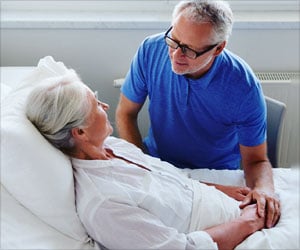Sleep patterns of a person can predict the onset of Alzheimer's disease. The development of beta-amyloid plaques in the brain due to poor sleep can indicate the beginning of Alzheimer's disease.

‘Sleep quality is a biomarker and predictor of Alzheimer's disease down the road. Fragmented sleep and less non-REM slow-wave sleep can increase buildup of beta-amyloid plaques in the brain and result in Alzheimer's disease. Deep sleep is the best to slow down the disease.’
Read More..




The brain washes itself during deep sleep, therefore sleeping more earlier in life could turn back the clock. Read More..
The overnight sleep quality of 32 healthy older adults was compared with the buildup of beta-amyloid.
Beta-amyloid is a toxic plaque which plays an important role in the onset and progression of Alzheimer’s disease. It destroys memory pathways and other brain function.
Each participant spent 8 hours on sleep in the lab while undergoing polysomnography. It records brain waves, heart rate, blood-oxygen levels and other parameters of sleep quality.
Over the years, the growth rate of the beta-amyloid protein in the participant's brain was tracked using positron emission tomography (PET). The researchers observed an increase in beta-amyloid in participants who experienced more fragmented sleep and less non-rapid eye movement (non-REM) sleep.
Advertisement
Through this study, the researchers were able to forecast an increase in the beta-amyloid plaques, which mark the beginning of Alzheimer’s.
Advertisement
The results also reinforce a link between poor sleep and Alzheimer’s disease.
Deep, restorative sleep should be a persons’ major priority as it can slow down the disease.
Sleep quality is a biomarker and predictor of Alzheimer’s disease down the road.
In the next face, the researchers are focused on implementing methods that boost sleep on high-risk participants.
Source-Medindia















